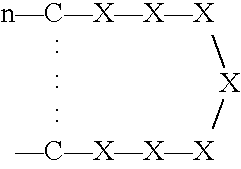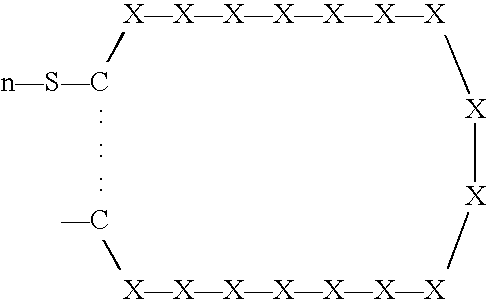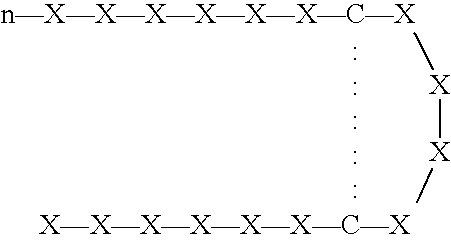Interfacial biomaterials
a biomaterial and facial technology, applied in the field of facial biomaterials, can solve the problems of relatively tedious and time-consuming procedures
- Summary
- Abstract
- Description
- Claims
- Application Information
AI Technical Summary
Benefits of technology
Problems solved by technology
Method used
Image
Examples
example 1
Peptide Libraries
[0261] Three phage peptide libraries were used: (a) a library encoding peptides of the format X.sub.6YX.sub.6; (b) a library encoding peptides of the format X.sub.6PX.sub.6, and (c) a library encoding peptides of the format SCX.sub.16S.
[0262] The X.sub.6YX.sub.6 library was constructed using variable sequences comprising 39 nucleotides ligated to the 5' terminus of the pIII gene of filamentous phage M13. Peptides produced by the library were 13-mer peptide sequences with a fixed central tyrosine residue flanked by six random amino acids on each side.
[0263] The following is provided as an exemplary library construction scheme for the X.sub.6YX.sub.6 library. A similar strategy can be used for the other libraries, which can also be produced using techniques that are well known in the art.
[0264] To produce the X.sub.6YX.sub.6 library, an oligonucleotide of sequence AGTGTGTGCCTCGAGCNNKNNKNNKNNKNNKNNKTATNNKNNKNNKNN KNNKNNKTCTAGACTGTGCAGT (SEQ ID NO:99)was built in which ...
example 2
Isolation of Peptides that Specifically Bind Polystyrene
[0267] The X.sub.6PX.sub.6, X.sub.6YX.sub.6, and SCX.sub.16S libraries (described in Example 1) were screened for binding to polystyrene using a 96-well high binding microtiter plate (COSTAR.RTM. polystyrene plates available from VWR Scientific of West Chester, Pa., United States of America). Nonspecific protein binding sites were blocked using 100 .mu.l of 5% dry milk in phosphate buffered saline plus TWEEN.RTM. (PBS-T). The plate was sealed and incubated for 1 hour at room temperature with shaking at 50 rpm. The wells were then washed 5 times with 300 .mu.l of PBS-T, ensuring that the wells did not dry out. The library was diluted in PBS-T and was added at a concentration of 10.sup.10 pfu / ml in a total volume of 100 .mu.l. After another 1 hour incubation at room temperature and shaking at 50 rpm, unbound phage were removed by 5 washes of 300 .mu.l PBS-T. Bound phage were eluted for 30 minutes at 150 rpm with 3 .mu.g / .mu.l thr...
example 3
Isolation of Peptides that Specifically Bind Polyurethane
[0272] The SCX.sub.16S library (described in Example 1) was screened for binding to polyurethane. Phage were detected, isolated, amplified, and sequenced as described in Example 2.
[0273] A representative peptide that specifically binds polyurethane is SCYVNGHNSVWWVFWGVS (SEQ ID NO:23).
PUM
| Property | Measurement | Unit |
|---|---|---|
| molecular weight | aaaaa | aaaaa |
| molecular weight | aaaaa | aaaaa |
| molecular weight | aaaaa | aaaaa |
Abstract
Description
Claims
Application Information
 Login to View More
Login to View More - R&D
- Intellectual Property
- Life Sciences
- Materials
- Tech Scout
- Unparalleled Data Quality
- Higher Quality Content
- 60% Fewer Hallucinations
Browse by: Latest US Patents, China's latest patents, Technical Efficacy Thesaurus, Application Domain, Technology Topic, Popular Technical Reports.
© 2025 PatSnap. All rights reserved.Legal|Privacy policy|Modern Slavery Act Transparency Statement|Sitemap|About US| Contact US: help@patsnap.com



